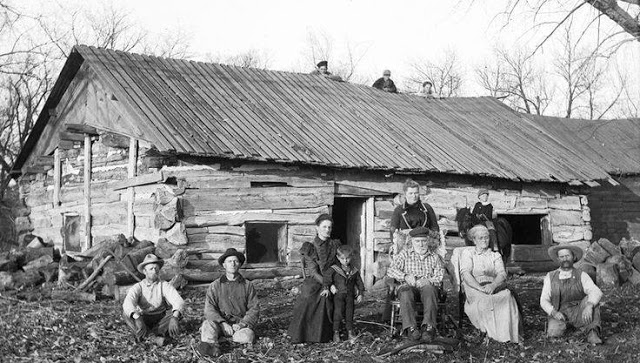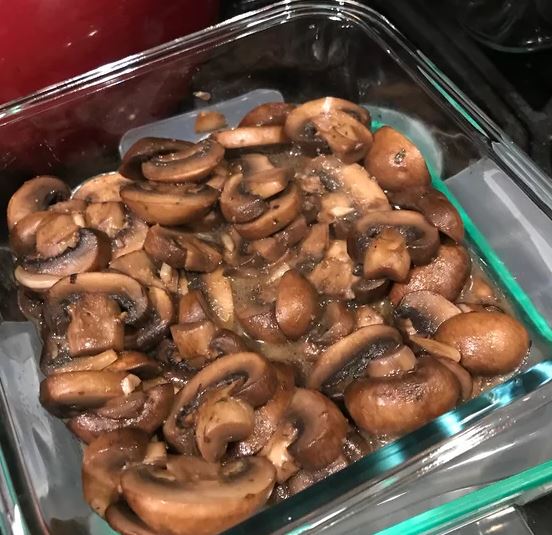
Cooking was a major part of each day. Early settlers butchered their own meat and made corned beef, sausage, smoked and dried meats. Large gardens yielded produce for canning, pickling and other preserves. Root cellars stored potatoes, carrots, and onions. Milk was separated into cream for butter and baking and milk for drinking. Breads, cakes and pies were of course all baked at home from scratch from whatever was available. For the most part meals were informal and the food hearty. Nothing was wasted. Dried bread was made into bread pudding; a bone was turned into soup and extra milk was made into pudding or cheese. Often there was a shortage of some ingredient. As you will see from the recipes, many are based on very basic ingredients and several on how to make a meal with only a few ingredients. Recipes would not only be for food but also for perfume, home remedies, wine and soap making. Recipe books were not common and cooking was very much a passed down art or trial and error. It is interesting to read recipes from this period, as often they are vague and written with a few small hints that only the person who wrote them would understand. Pioneer women who had to decide what few precious things to carry across the plains surely made one choice in common—their own individual collection of “receipts,” as recipes were then called. For them, these were reminders of a security left behind and a hope for the abundance of the future. In the interim, they simply did what they had to do to keep their families alive. Many early memories of pioneer food concerned the frugality with which the Saints lived: “We lived on cornbread and molasses for the first winter.” “We could not get enough flour for bread … so we could only make it into a thin gruel which we called killy.” “Many times … lunch was dry bread … dipped in water and sprinkled with salt.” “These times we had nothing to waste; we had to make things last as long as we could.” * No doubt the “receipt” books were closed during these times, and efforts were given simply to finding food and making it go as far as possible. But slowly, even out of this deprivation, recipes grew. The pioneer women learned to use any small pieces of leftover meat and poultry with such vegetables as they might have on hand—carrots, potatoes, corn, turnips, onions—to make a pie smothered with Mormon gravy.
20 Lost Recipes From The Pioneers
Side Pork and Mormon Gravy
Mormon gravy, common fare among the early settlers and apparently a creation of necessity expressly for the times, is still hearty and nourishing for many of this generation who like to make it with ground beef or frizzled ham or bacon and serve it over baked potatoes.
- 8 thick slices side pork (or thick-cut bacon strips)
- 4 tablespoons meat drippings
- 3 tablespoons flour
- 2 cups milk
- Salt, pepper, paprika
Cook meat on both sides in heavy frying pan until crisp. Remove from pan and keep warm. Measure fat and return desired amount to skillet. Add flour and brown slightly. Remove from heat and add milk, stirring well to blend. Return to heat and cook and stir until mixture is thick and smooth. Season to taste. Serve with side pork on potatoes, biscuits, cornbread, or even pancakes.
Mud apples
This is a variation on a Native American cooking method. You will need
- 4 large apples
- A bucket of mud
Coat the apples with about an inch of mud on all sides, being sure that the mud is of a nice thick consistency. When the fire has burned long enough to make some coals, have your adult help you to scoop some of the coals to the side. Bury the apples in the coals, and leave them there for about 45 minutes. Scrape away the cooled coals. Knock the dry cooked mud off of the apples and discard the skins. Spoon up the sweet steamy pulp for a surprising treat. Some groups of Native American people used a mud coating on their food as a sort of oven. The steam from the mud would keep fresh-caught fish moist, and as it dried and became clay-like, it protected the food from burning. When the mud was peeled off, it took a lot of the fish scales with it. A delicious instant meal.
Chuckwagon beans
This is a cattle trail recipe from the Midwest. Although this was originally done on the campfire, it might be best if you bow to modern convenience and do the cooking on a stove top. You will need
- A 16-ounce package of dry pinto beans
- 9 cups of water
- Two large onions, peeled and chopped up
- 2 teaspoons of salt
- ½ teaspoon of oregano
- ½ teaspoon of garlic powder, or two cloves of sliced garlic
- ¼ teaspoon of pepper
- 1 tablespoon of brown sugar or molasses (add this last, and put in a little more if you like.)
Wash the beans and heat them along with 6 cups of water ’til they boil for five minutes, then turn the stove off. Let them sit for an hour. Add three more cups of water and boil it all again. Now add everything else, stir it up, and cook it for about an hour. Cowpokes on the drive west had to settle for foods which were portable. That meant a basic menu of beans and lots of meat. For a treat, there was cornbread, biscuits, or a sweetened rice dish. Pinto beans (which are small and spotted when raw, like a pinto pony) seemed to be the favorite. When cooked, these beans swell up and turn a sort of pinkish white. They were first given to the settlers by the natives on the Mexican border. When you eat beans with rice or corn, the two foods mix up inside your body to create an important type of protein which is like the protein in meat. (Your body is made largely of protein, and so you need to eat a lot of it.) That’s why the native Southwestern people were so healthy with a diet of mostly beans and corn and not much meat.
Baked pocket yams
These were “handy” during the winter months, and not particular to any one area of the country. Take several sweet potatoes, individually wrap them in foil, and surround them on all sides with mounded hot coals. Occasionally turn the potatoes. Cook till the sweet steam pipes out of the foil (about 45 minutes). Poke into the potato with a clean sharpened twig to check for doneness (the center will be soft). When the potatoes are done, DON’T EAT THEM YET. Let them cool a bit, then slip one into each pocket to be used as hand warmers. These will keep you comfortable while you chat around the campfire. Pioneer mothers used to send their children off with these in the winter months to keep their hands toasty on the long walk to school. Then the kids would eat them for lunch. When you eat yours, you might want to use a dish and slather them up with butter. Spotted Pup Take whatever amount needed
for hungry cowboys of fluffy, cooked rice. Put in Dutch oven and cover with milk and well-beaten eggs.
Add a dash of salt.
Sweeten well with sugar. Add raisins and a little nutmeg and vanilla. Bake in slow oven until egg mixture is done and raisins are soft. Jerky Gravy Jerky, ground or chopped fine
Little Fat or Grease
Flour
Salt & pepper
Milk Fry the jerky until done.
Remove meat from grease, and add flour.
Add milk, and salt & pepper. Cook gravy. Add meat to gravy.
The amount of each ingredient depends on how much gravy you want. Lemon Pie One cup of hot water
One tablespoonful of corn-starch
One cup of white sugar
One tablespoonful of butter
Juice and grated rind of one lemon Cook for a few minutes; add one egg; bake with a top and bottom crust.
This makes one pie. Cooked Cabbage Salad 1 Pint or more of chopped cooked cabbage Add: 1 Egg well beaten
¼ Cup vinegar
1 Tsp butter
Dash of salt and pepper Sweeten to suit taste. Simmer a few minutes and add ½ cup of thick fresh cream. Serve immediately.
Winter Red Flannel Hash
A great way to use left over corned beef is to add a few new ingredients and create Red Flannel Hash. Who knows who came up with the beets, but it really is colorful, and sticks to the ribs. 1 ½ Cups chopped corned beef
1 ½ Cups chopped cooked beets
1 Medium onion, chopped
4 Cups chopped cooked potatoes Chop ingredients separately, then mix together.
Heat all ingredients in a well- greased skillet,
slowly, loosen around the edges, and shake to prevent scorching.
After a nice crust forms on bottom, turn out on a warmed plate and serve.
If it seems a little dry add a little beef broth.
Try with a couple poached eggs, for a hearty meal.
Spiced Corn Beef
- To 10 pounds of beef…
- take 2 cups salt
- 2 cups molasses
- 2 tablespoonfuls saltpeter
- 1 tablespoonful ground pepper
- 1 tablespoonful cloves
Rub well into the beef.
Turn every day, and rub the mixture in.
Will be ready for use in 10 days.



